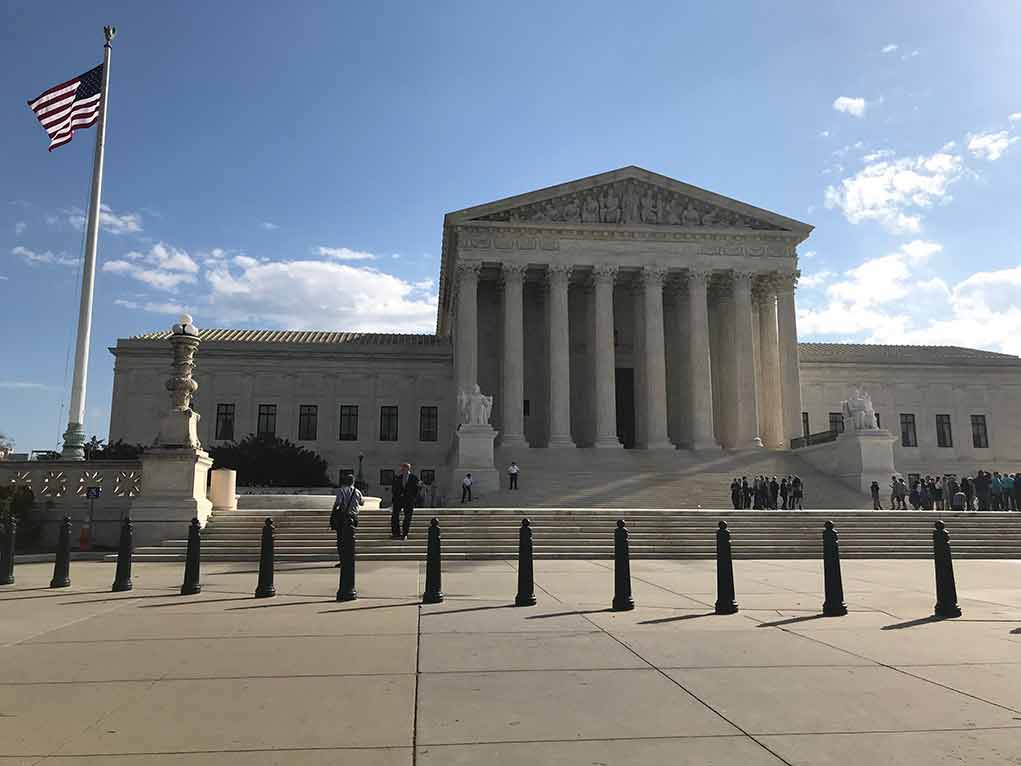
Supreme Court Chief Justice John Roberts delivers a crucial win for President Trump in his battle to fire Biden-appointed agency leaders who oppose his agenda, potentially reshaping the power balance between the presidency and independent agencies for decades to come.
Key Takeaways
- Chief Justice Roberts temporarily paused lower court rulings that had reinstated two Biden-appointed board members after Trump fired them.
- The case could overturn or narrow the 1935 Humphrey’s Executor ruling that restricts presidential power to fire independent agency leaders.
- Trump’s administration argues that forcing a president to delegate power to agency heads who oppose his policies violates constitutional separation of powers.
- The Supreme Court’s decision could dramatically strengthen presidential authority over agencies that have operated with significant independence.
- The case affects the National Labor Relations Board and Merit Systems Protection Board, both crucial for implementing Trump’s agenda.
Presidential Authority vs. Agency Independence
President Trump scored a significant victory when Chief Justice John Roberts temporarily allowed his administration to remove two Biden-appointed leaders from independent agencies while their cases proceed through the courts. The dispute centers on Trump’s firings of Gwynne Wilcox from the National Labor Relations Board and Cathy Harris from the Merit Systems Protection Board. Both were appointed during the Biden administration and have challenged their dismissals, claiming they can only be removed for cause as established in decades-old Supreme Court precedent.
The case strikes at the heart of a constitutional tension that has existed since the New Deal era: How much control should a president have over agencies that Congress intentionally designed to operate with some independence from the executive branch? Solicitor General D. John Sauer has made the administration’s position clear, arguing that preventing the President from removing agency heads at will “causes grave and irreparable harm to the President and to our Constitution’s system of separated powers.”
The Humphrey’s Executor Precedent Under Scrutiny
At the center of this legal battle is the 1935 Supreme Court decision Humphrey’s Executor v. United States, which has long been a thorn in the side of those who believe in a strong executive. This nearly 90-year-old precedent limits presidential power to fire independent board members without cause, creating a class of federal officials partially insulated from direct presidential control. Conservative legal theorists have criticized this ruling for decades, arguing it creates an unconstitutional fourth branch of government that exercises executive power without proper accountability to the elected president.
“This case raises a constitutional question of profound importance: whether the President can supervise and control agency heads who exercise vast executive power on the President’s behalf, or whether Congress may insulate those agency heads from presidential control by preventing the President from removing them at will,” said Solicitor General D. John Sauer.
The Trump administration isn’t just seeking a temporary victory here – they’re asking the Supreme Court to reconsider or significantly narrow Humphrey’s Executor, which would represent a seismic shift in the constitutional balance of power. Conservatives have longed for this opportunity to restore what they see as the proper constitutional role of the president as head of the executive branch with complete authority over those who exercise executive power. With a 6-3 conservative majority on the Supreme Court, the time may finally be right for this fundamental change.
Trump vs. the Constitution: The Legal and Institutional Challenges of an Unconstrained Presidency
The second Trump administration presents a fundamental test for the resilience of the American constitutional system. With his return to power, the legal and institutional…
— Niels Groeneveld (@nigroeneveld) March 10, 2025
The Real-World Stakes
The practical implications of this case extend far beyond abstract constitutional theory. The NLRB, where Wilcox served as the first Black woman on the board, currently lacks a quorum after her removal, effectively paralyzing the agency’s ability to resolve labor cases. This situation perfectly illustrates why the Trump administration is seeking swift resolution – key agencies tasked with implementing the president’s agenda are currently hamstrung by leadership opposed to that very agenda. The Merit Systems Protection Board, which reviews federal worker disputes, is particularly crucial as Trump pursues his promised overhaul of the federal bureaucracy.
“The President should not be forced to delegate his executive power to agency heads who are demonstrably at odds with the Administration’s policy objectives for a single day—much less for the months that it would likely take for the courts to resolve this litigation,” Solicitor General D. John Sauer said.
Attorneys for Wilcox have argued that her firing lacked due process and wasn’t justified by neglect or malfeasance, claiming this route is her only path to victory. However, this argument misses the larger constitutional question at stake: Should a president be forced to retain agency leaders who actively work against his policy agenda? For conservatives who believe in a unitary executive, the answer is a resounding no. The Constitution vests executive power in the president alone, and agency heads merely exercise that power on his behalf – a delegation that logically should be revocable at the president’s discretion.
What Comes Next
The Trump administration has requested the Supreme Court to review these cases on an expedited basis, asking for arguments during a special session in May with a decision expected by July. While Solicitor General Sauer acknowledged the challenges of addressing these cases quickly, he emphasized that the current situation cannot persist. With Justice Roberts’ administrative stay now in place, the officials have been ordered to file briefs by next Tuesday as the Court considers whether to take up the broader constitutional questions at stake.
If the Supreme Court sides with President Trump, as many legal experts expect given the Court’s conservative majority, it would represent a historic victory for presidential authority and could fundamentally reshape the administrative state. Independent agencies that have operated with significant autonomy for decades could suddenly find themselves much more directly accountable to presidential control – a change that conservatives have long argued would restore proper constitutional order and democratic accountability to unelected bureaucrats who wield enormous power over American life.
Sources:
- Supreme Court allows Trump’s firings of independent agency board members to take effect, for now | AP News
- Supreme Court Sides With Trump, for Now, on Firing Agencies’ Leaders – The New York Times
- Supreme Court Lets Trump Move Forward With Firing Agency Leaders For Now | The Daily Caller












